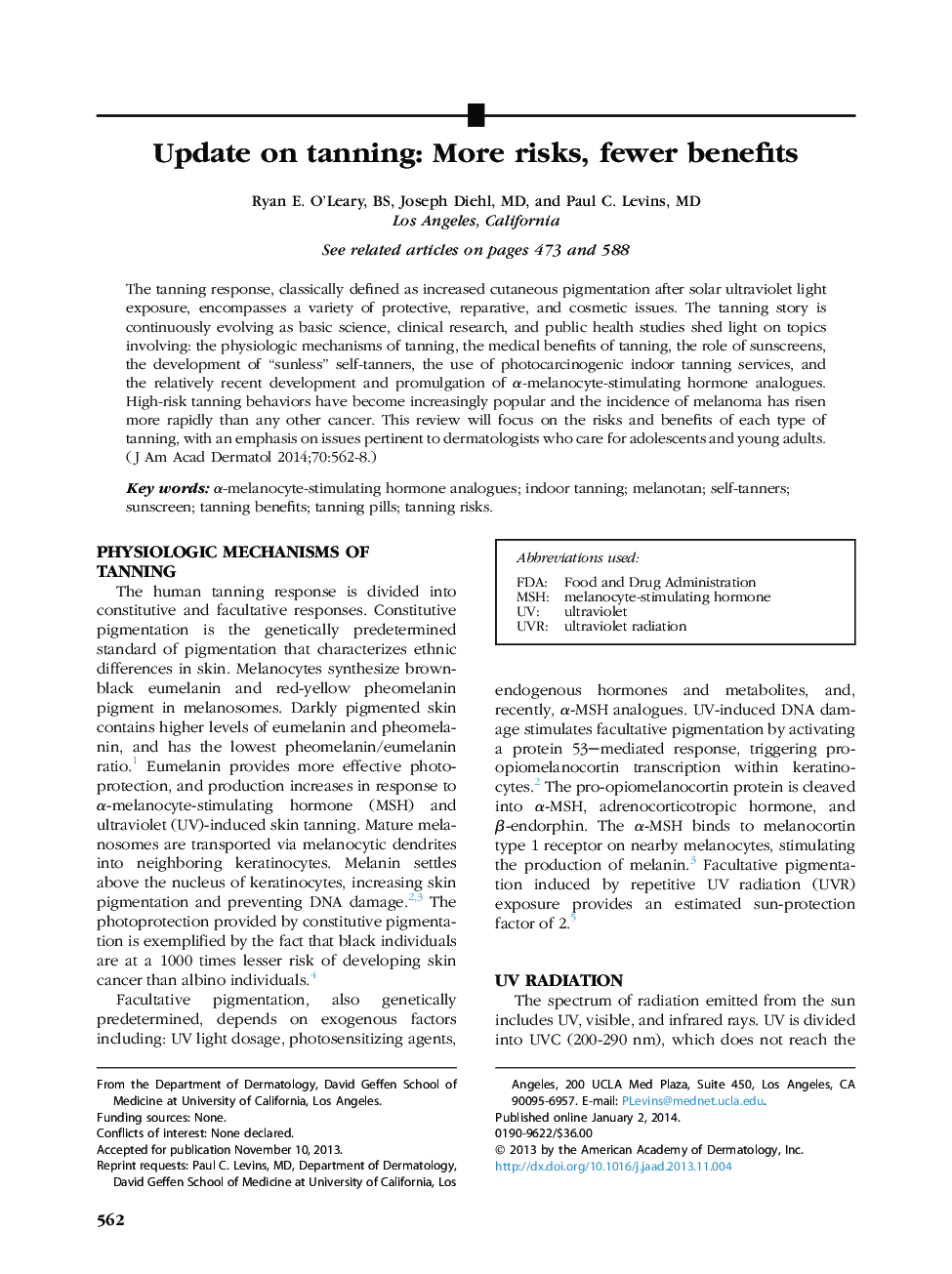| Article ID | Journal | Published Year | Pages | File Type |
|---|---|---|---|---|
| 6073552 | Journal of the American Academy of Dermatology | 2014 | 7 Pages |
Abstract
The tanning response, classically defined as increased cutaneous pigmentation after solar ultraviolet light exposure, encompasses a variety of protective, reparative, and cosmetic issues. The tanning story is continuously evolving as basic science, clinical research, and public health studies shed light on topics involving: the physiologic mechanisms of tanning, the medical benefits of tanning, the role of sunscreens, the development of “sunless” self-tanners, the use of photocarcinogenic indoor tanning services, and the relatively recent development and promulgation of α-melanocyte-stimulating hormone analogues. High-risk tanning behaviors have become increasingly popular and the incidence of melanoma has risen more rapidly than any other cancer. This review will focus on the risks and benefits of each type of tanning, with an emphasis on issues pertinent to dermatologists who care for adolescents and young adults.
Keywords
Related Topics
Health Sciences
Medicine and Dentistry
Dermatology
Authors
Ryan E. BS, Joseph MD, Paul C. MD,
